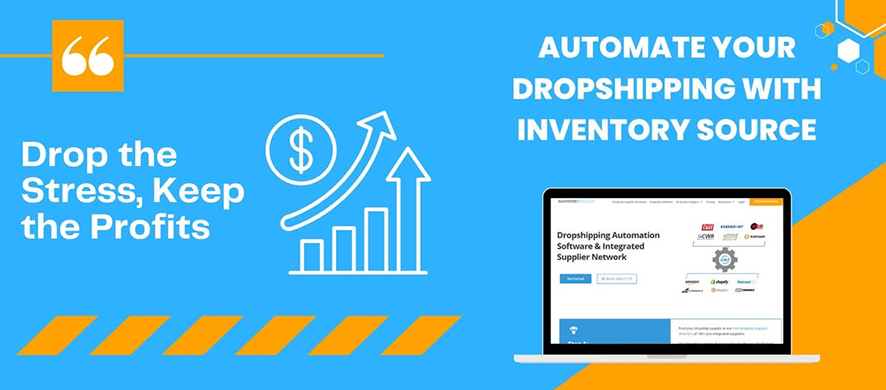
In the dropshipping world, nothing erodes customer trust faster than bad information. A product shows as in stock when it’s not. An order ships late—or worse, doesn’t ship at all. The tracking number never updates. And suddenly, your inbox is full of frustrated messages asking, “Where’s my order?” or “Why did you sell me something you can’t deliver?”
For serious dropshippers, these aren’t isolated incidents—they’re red flags that point to a deeper issue: reactive inventory management. When your store operates on outdated spreadsheets or static CSV uploads, you’re always one step behind. But by embracing automation and real-time syncing, you can flip the script—reducing complaints, protecting your reputation, and creating a smoother customer experience that supports long-term growth.
Contents
- Why Inventory Mismanagement Fuels Customer Frustration
- What Proactive Inventory Management Looks Like
- How Automation Reduces Specific Types of Complaints
- The Tools That Make Proactive Inventory Management Possible
- How to Implement Proactive Inventory Management in Your Store
- Final Thoughts: Clean Inventory = Happy Customers
Why Inventory Mismanagement Fuels Customer Frustration
Most customer complaints don’t come out of nowhere. They’re usually the result of behind-the-scenes breakdowns in your operations—especially around inventory. Here’s how those breakdowns manifest on the front end:
- Out-of-stock items: A customer buys something that’s already gone. You have to cancel, refund, and apologize. They leave a bad review and never come back.
- Delayed shipping: You think your supplier has stock, but they don’t. The order sits in limbo for days before anyone notices.
- Inaccurate product listings: Pricing, color, or size information is outdated or mismatched with what the customer receives.
- Tracking gaps: Orders get fulfilled but tracking numbers are late or never synced, leaving customers in the dark.
These aren’t minor hiccups—they’re the kind of issues that get flagged in public reviews, drain support bandwidth, and hurt repeat purchase rates. The common denominator? Inventory data that’s incomplete, delayed, or totally disconnected from your storefront.
What Proactive Inventory Management Looks Like
Proactive inventory management isn’t just about knowing what’s in stock—it’s about making sure your store reflects reality in real time. It’s about eliminating the gap between your supplier’s inventory and what your customers see, buy, and expect.
Key Traits of Proactive Inventory Systems:
- Real-time syncing: Your storefront updates automatically as supplier stock levels change.
- Low-stock alerts: Products nearing depletion are flagged before they cause oversells.
- Out-of-stock automation: Sold-out items are hidden or marked unavailable instantly—no manual intervention needed.
- Multi-supplier awareness: If one supplier runs out, another can fulfill the order.
- Centralized visibility: One dashboard shows what’s available, where it’s shipping from, and how soon it can arrive.
Instead of reacting to customer complaints after they happen, you’re preventing them by fixing the root issues before they become problems.
How Automation Reduces Specific Types of Complaints
Let’s connect the dots. Here’s how automation—especially through inventory management platforms—directly reduces the types of complaints dropshippers deal with most.
1. “You sold me something that’s out of stock.”
This is arguably the most damaging type of complaint. It makes your store look unprofessional and creates immediate friction with the customer.
Solution:
- Real-time inventory syncing ensures your product listings reflect supplier availability within minutes—not hours or days.
- Out-of-stock automation rules can hide listings or prevent checkout when stock drops to zero.
- Inventory thresholds can warn you when stock drops below a certain level so you can restock, pause ads, or swap suppliers.
2. “Why hasn’t my order shipped yet?”
Delays in fulfillment often come down to one issue: you didn’t know your supplier was out of stock or slow to respond. Without real-time visibility, you’re flying blind.
Solution:
- Automated order routing sends orders to the supplier immediately after purchase.
- Multi-supplier logic can route orders to a backup vendor if the primary is out of stock.
- Tracking integration pushes updates to the storefront and to the customer, keeping them informed automatically.
3. “The product I got isn’t what I ordered.”
Incorrect variants, wrong images, outdated pricing—these stem from mismatched or outdated product data.
Solution:
- Supplier feed integration ensures product titles, variants, and descriptions stay accurate as suppliers update their catalogs.
- Bulk editing and mapping tools allow you to standardize data across hundreds or thousands of SKUs.
- Version tracking helps catch changes in product packaging or specs that may confuse customers.
4. “Why haven’t I received a tracking number?”
When tracking numbers aren’t automatically synced to your store, customers feel ignored. Manual updates fall through the cracks, especially at volume.
Solution:
- Automated tracking updates pull tracking info from the supplier and sync it to your eCommerce platform as soon as it’s available.
- Customer email/SMS automations notify buyers with links and estimated delivery windows.
The Tools That Make Proactive Inventory Management Possible
The good news? You don’t have to custom-code these systems from scratch. There’s a growing field of automation platforms designed specifically for dropshippers managing supplier-fed inventory.
Top Tools for Proactive Inventory Management:
- Inventory Source: Connects your store to over 230 vetted U.S.-based suppliers. Provides real-time syncing, low-stock alerts, and full automation of inventory and orders.
- Syncee: Offers visual product catalog management and daily syncs with curated suppliers in the U.S., UK, and EU.
- AutoDS: A complete automation tool for AliExpress, Walmart, Amazon, and more, with real-time price and inventory monitoring.
- SkuVault: Ideal for hybrid fulfillment models. Tracks real-time inventory across multiple warehouses and suppliers.
These tools allow you to scale confidently while reducing customer service headaches.
How to Implement Proactive Inventory Management in Your Store
Ready to level up your inventory game? Here’s a practical roadmap to go from reactive to proactive:
1. Audit Your Current System
List all the ways you currently update inventory. Are you using CSVs? Manual supplier checks? Look for delays, errors, or gaps in communication.
2. Connect a Real-Time Integration Platform
Choose a platform like Inventory Source that fits your supplier network and storefront. Start with your most important products and suppliers.
3. Set Stock Threshold Rules
Configure rules to:
- Unpublish or hide products with 0 inventory
- Alert you when products hit a low-stock threshold
- Auto-route orders to backup suppliers when needed
4. Automate Tracking and Customer Updates
Integrate your fulfillment platform with your CRM or customer support tools (like Gorgias or Klaviyo) to automatically send tracking numbers, delay notices, and delivery updates.
5. Monitor and Iterate
Review support tickets weekly. What complaints are recurring? Use data to adjust stock rules, swap out unreliable suppliers, or expand automation coverage.
Final Thoughts: Clean Inventory = Happy Customers
Customer complaints are rarely just a front-end issue. They almost always trace back to poor communication, inaccurate listings, or fulfillment delays—all of which are rooted in inventory mismanagement. But when you move from a reactive to a proactive approach, everything changes.
Real-time inventory syncing, automated order routing, and accurate product data don’t just make your life easier—they make your store more trustworthy. And in a competitive market where one bad experience can cost you future sales, that trust is everything.
So if your customer support inbox is getting noisier—or if you’re afraid to scale because your ops can’t keep up—it’s time to rethink how you manage inventory. With platforms like Inventory Source and others, proactive inventory management isn’t just possible. It’s your competitive advantage.

